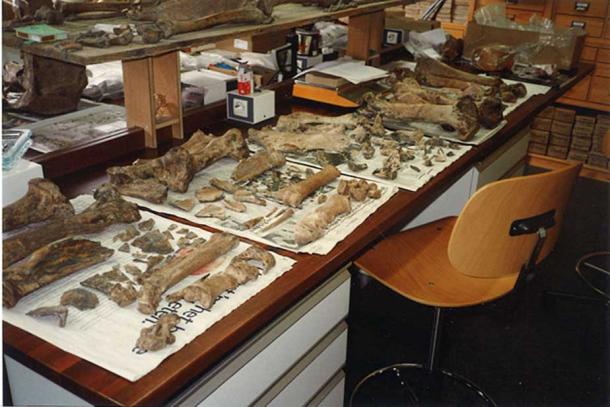Archaeozoology at Mapungubwe: Let the Bones Speak
Ever since Creation, mankind has had an interdependent relationship with the animal kingdom. Mapungubwe (circa 1220 to 1290 AD) on the northern border of South Africa, is an Iron Age settlement and can probably be viewed as the first city of the southern-African region. Mapungubwe is famous for its treasure of golden artifacts, but an aspect not often revealed, is its rich assemblage of animal deposits, of particular value to archaeozoologists.

The location of Mapungubwe and K2 at the border between South Africa, Botswana and Zimbabwe (Image: A Antonites)
Archaeozoology is the study of faunal remains at archaeological sites, an exposé of the relationship between ancient people and animals. Topics regularly researched by archaeozoologists may include: in what ways were animals consumed as food - as meat, bone marrow or animal fat; which animal parts had medicinal value; how were parts of animals used as clothing, for example fur and leather; bones used as weapons such as arrows or hides used as shields; or even everyday utensils such as needles, knives, bowls, horns as drinking vessels; or which parts of animals were used for adornment such as feathers, beads, ivory combs or masks; or as musical instruments, such as bone whistles. Animals also had, and still have, a spiritual and symbolic meaning to humans, for instance digesting the heart of a predator may strengthen a warrior’s valor or wearing a leopard skin identifies a person as royalty. Some animals feature in ritual burial sites and diviners use animal bones as divination tools.

Archaeozoologist’s desk full of bones (CC BY-SA 4.0)
The Kingdom of Mapungubwe
The Kingdom of Mapungubwe consisted of people of eastern Botswana, western Zimbabwe and northern South Africa. The name ‘Mapungubwe’, may have been derived from an animal legend, although which animal is debatable. It may refer to a jackal or even a bateleur, depending on the language. It either means ‘Place where the jackal eats’, or ‘Rocks of the bateleur eagle’. Other meanings may be ‘Place of Wisdom’ or ‘The place where the rock turns into liquid’. The world-famous golden rhino figurine has been associated with a black rhino, which featured as a leadership symbol in this class-based society.
The greater Mapungubwe site can be divided into the Mapungubwe Hill, the settlement of a prosperous community and their immediate predecessors who occupied the adjacent site known as ‘K2’.
Like this Preview and want to read on? You can! JOIN US THERE ( with easy, instant access ) and see what you’re missing!! All Premium articles are available in full, with immediate access.
For the price of a cup of coffee, you get this and all the other great benefits at Ancient Origins Premium. And - each time you support AO Premium, you support independent thought and writing.
Annie R. Antonites received her doctorate degree at Yale University on the subject of Iron Age foodways in the Limpopo Valley. She has participated in archaeological excavations in the Bolivian Altiplano, Mongolian Gobi Desert and all over South Africa. She is currently employed as a senior researcher at The Heritage Foundation in Pretoria, South Africa.
Top Image: Golden Hill of Mapungubwe (Copyright University of Pretoria)

















